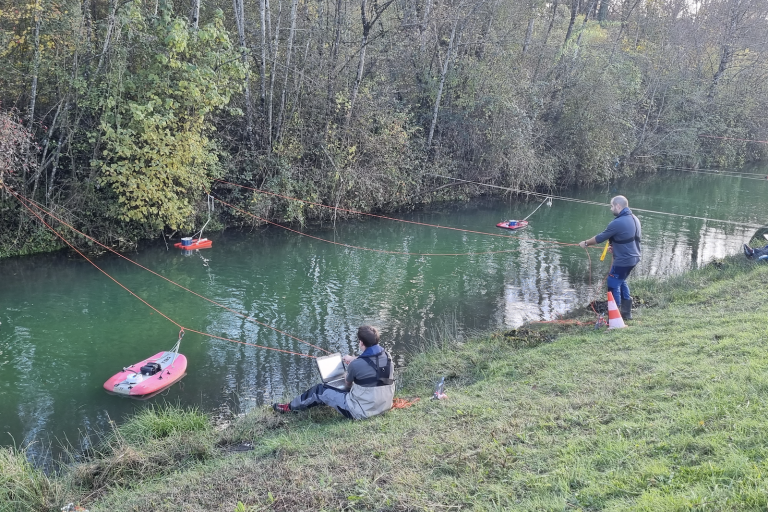Integrating hydrology into a coherent and seamless Earth System Approach
The third session of the WMO Commission for Observation, Infrastructure, and Information Systems (INFCOM-3) took place in Geneva, Switzerland from 15 to 19 April 2024. In line with the goal of integrating various disciplines (such as meteorology, climatology, hydrology, oceanography, and cryosphere science) into a coherent and seamless Earth System Approach, topics relevant to hydrology science and practice were discussed throughout the session.

Dr. Jan Danhelka from Czechia was elected as the co-vice-president of the Commission for the next intersessional period, which lasts four years. INFCOM also decided to establish an Advisory Group on Hydrology to aid in coordinating the implementation of the infrastructure aspect of the WMO Plan of Action for Hydrology. Additionally, seven other recommendations aimed at better integration of hydrology were approved .
Four Standing Committees were re-established (i.e., observing network, instruments, information management, and prediction systems) and hydrological themes will focus in most of the working teams (e.g., uncertainty, metadata, etc.) in a multidisciplinary spirit. Specific teams dedicated to hydrology will be established as needed, in accordance with the approved recommendations of the Task Team on Hydrology.
The session made several important technical decisions of interest to National Hydrological Services (NHSs) and hydrology practitioners worldwide, which are as follows:
- INFCOM will develop a detailed workplan to connect Global Hydrological Data Centres, including soil moisture and GEMS-Water (water quality) into the WMO data centres landscape, particularly WIGOS and WIS. This will include promoting the interoperability and integration between data set and products, providing data backup for NHSs, collaborating with the United Nations Environment Programme (UNEP) and other UN and non-UN agencies, and providing input to HydroSOS.
- In collaboration with SERCOM, INFCOM will initiate a pilot to develop a WMO Integrated Processing and Prediction System (WIPPS) activity. This pilot will focus on creating global riverine flood prediction products to meet identified requirements as a contribution to the Early Warnings for All Initiative. The aim is to provide real-time global flood forecasting products (in conformity with the single-voice principle in provision of flood forecasting and warnings), assist in calculating verification statistics, and develop standardized skill scores and metrics. Furthermore, it will examine the utility and technical challenges of using flood prediction products from non-traditional sources,such as the private sector and non-partner international organizations, through the WIPPS.

- A new section on image velocimetry techniques for stream gauging has been added to the Guide of hydrological practices (WMO No. 168). This is part of the ongoing effort to provide up-to-date guidance to the NHSs. It was also decided to further engage in international intercomparisons of water level and flow measurement instruments and methodologies, including innovative, emerging, and lower-cost solutions.
- A representative from AG-Hydrology will also participate in the work of the Study Group on Environmental Sustainability. This group will develop a roadmap on how to address the environmental sustainability goals of WIGOS, WIS and WIPPS, which includes collecting and sharing best practices.
- Finally, INFCOM has committed to providing support for observations and dissemination of data and information. This support contributes to the infrastructure component of the UN Strategy for Water and Sanitation, including the Integrated Monitoring Initiative for Sustainable Development Goal 6 (IMI SDG-6), implemented under UN-Water coordination doc.
For more on hydrology data centres, see this article: INFCOM-3 advances exploration on Global Hydrological Data Centres.
For daily highlights, visit the INFCOM-3 dedicated webpage.
Related Document
- Doc 7.3: Draft Decision 7.3/1 - Study group on Environmental Sustainability
- Doc 8.1(6): Draft Decision 8.1(6)/1 - Decision on the report on the WMO Global Hydrological Data Centres
- Doc 8.2(4): Draft Resolution 8.2(4)/1 - Update of the Guide to Hydrological Practices, Volume I (WMO-No. 168)
- Doc 8.2(6): Draft Decision 8.2(6)/1 - Future instrument intercomparisons
- Doc 8.4(3): Draft Recommendation 8.4(3)/1 – Demonstration of the integration of products from non-traditional sources into the WMO Integrated Processing and Prediction System
- Doc 8.5(3): Draft Decision 8.5(3)/1 – Recommendations of the Task Team on Hydrology
- Doc 9.1: Relation with the United Nations and other organizations
*Documents are available on the INFCOM-3 minisite.

